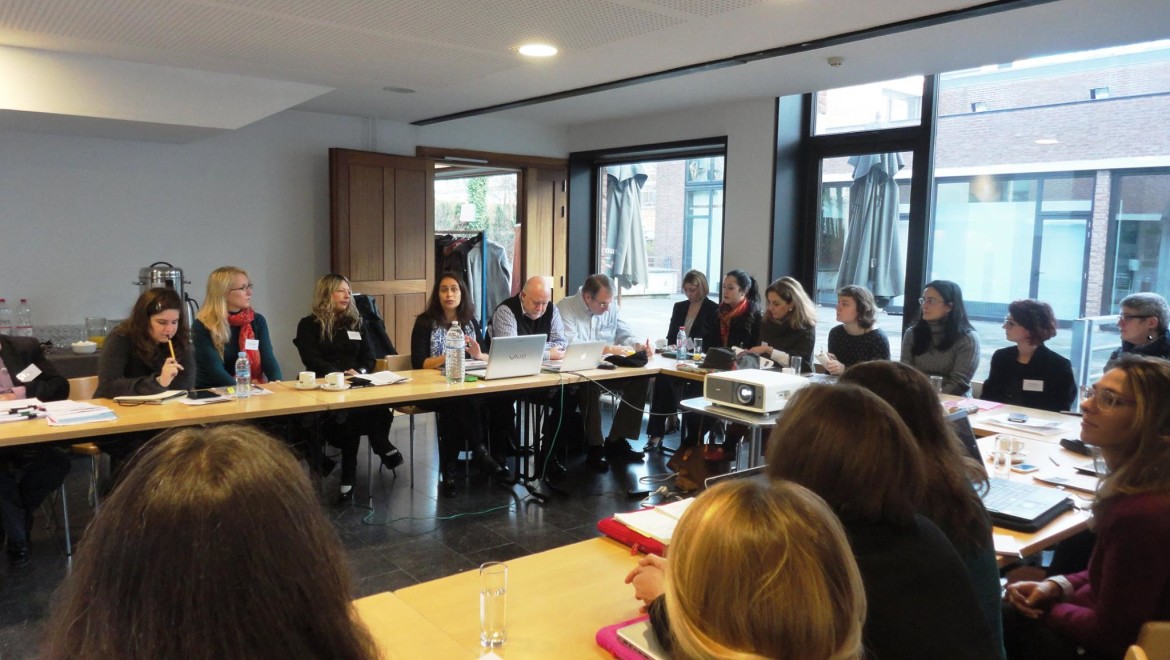George Chatzinakos joined the 4th ENCATC‘s (the European Network on Cultural Management and Cultural Policy education) Academy in Brussels, Belgium on 8-9 of December. The theme of this year’s Academy was on “Culture in External Relations and Cultural Diplomacy: Focus on the Americas”. The event was organised in partnership with Goldsmiths, University of London, under the framework of Cross Atlantic Education Exchange and with the support of Creative Europe. The 2 days intensive learning program gathered experts coming from Europe and USA and other various professionals from the field of international cultural relations and management. Academics, researchers, EU officials and other representatives from international organisations and Institutes of Culture, and civil servants (national, regional and local levels) were given the chance to gain a better and contemporary insight with regards to cultural diplomacy and relations between Europe and the Americas. The interactive debate of ideas and exchange of experience enabled participants to understand both the geopolitical contexts and the theories which can be used to view culture in external relations; the role of cultural co-operation and exchange; the various types of activities and structures used for cultural engagement and understand how the field is changing in terms of actors involved. The interesting mix of people along with their interdisciplinary views, and the conversation, bridged people together providing a very good chance of networking.
A particular constructive focus was shown on North and South America and more specifically on the USA, Canada, Mexico, Brazil and Jamaica. As per ENCATC, it is a prevalent and undeniable fact that Europe and the Americas are linked by strong historical, cultural and economic ties. Beginning from the voyages of Columbus and the influence of Christianity to extensive migration patterns and the domination of Indo-European languages, resulted in the establishment and domination of a European cultural legacy in the Americas. However, in context of the 21st century, both continents and their relationship are in an accelerated process of change despite the tensions involved. The Americas consist some of the emerging world’s leading economies and therefore many countries in the other side of Atlantic Ocean are important players in international cultural relations and diplomacy. These consists of the USA and Canada, both established fountains of cultural production, as well as emerging players, such as Brazil or Mexico, which are increasingly under the spotlight, trying to create a new image for the global competition.
The first day of the Academy began with an analytic presentation regarding the terminology and basic concepts currently being used in the area of cultural diplomacy and culture in external relations, as well as the examination of the current context and challenges faced by countries in the Americas, which is characterised by structural changes, social mobility and globalization processes. The second day had a more practical focus, with panel sessions, bringing together practitioners and experts from different areas, who shared their experiences with regards to current trends and various projects that have been implemented with partners in the Americas. Particular attention was given to a detailed examination of existing programmes and available grants, which focus on successful cooperation projects with operators in the cultural and educational field. According to ENCATC, “in times of limited financial and human resources, it is useful to be aware of the existing programmes and grants available to start and implement a successful cooperation with operators in the cultural and educational field”.
Considering culture as the fourth pillar of the economy and as a vehicle of supporting social and economic change, governments are increasingly trying to achieve their external relations objectives and aims through arts and culture. Cultural diplomacy can be viewed as a tool, not only to persuade but also communicate in a growing creative sector, building relations and understanding the needs of others. Milton Cumming defines cultural diplomacy as “the exchange of ideas, information, values, systems, traditions, beliefs, and other aspects of culture, with the intention of fostering mutual understanding”. Cultural diplomacy can be used to build up countries’ image, as a place making process, for business and tourism, higher education and research, supporting the cultural sector to expand internationally, cultural mobility, supporting cultural diversity and diaspora communities, overcoming stereotypes and enhancing social cohesion. The pushing of any form of exclusive national culture is giving way to interaction and collaboration at every level, enabling cross overs. However, it is important to note that culture also plays a part in the projection and influence of power, with an underlying notion of multiplicity of national identities which potentially reproduce nationalism, stereotypes and distilled images.
Though the concept of cultural diplomacy can be contested, owing to an inappropriate term, it is increasingly becoming a challenge which governments, policy-makers and communities have to address since our world is fundamentally digital and interconnected. Governments have to rethink their actions and become more facilitators than delivering activities. Undeniably culture in external relations is connected to a form of soft power that can potentially help to lessen the boundaries that exist between different countries, creating transnational exchanges and synergies among authorities, people and communities, transforming potential fields of conflicts into places of coexistence, intercultural dialogue and local sustainable development.
16 December 2014
